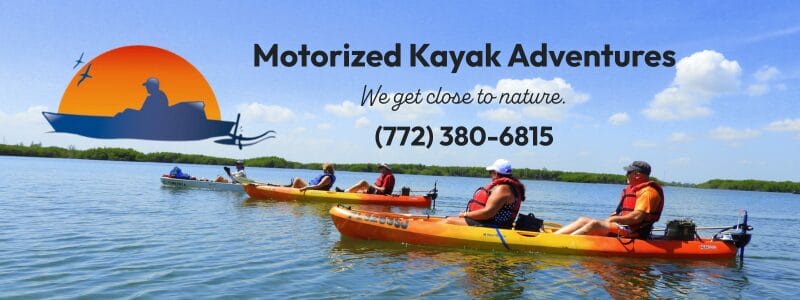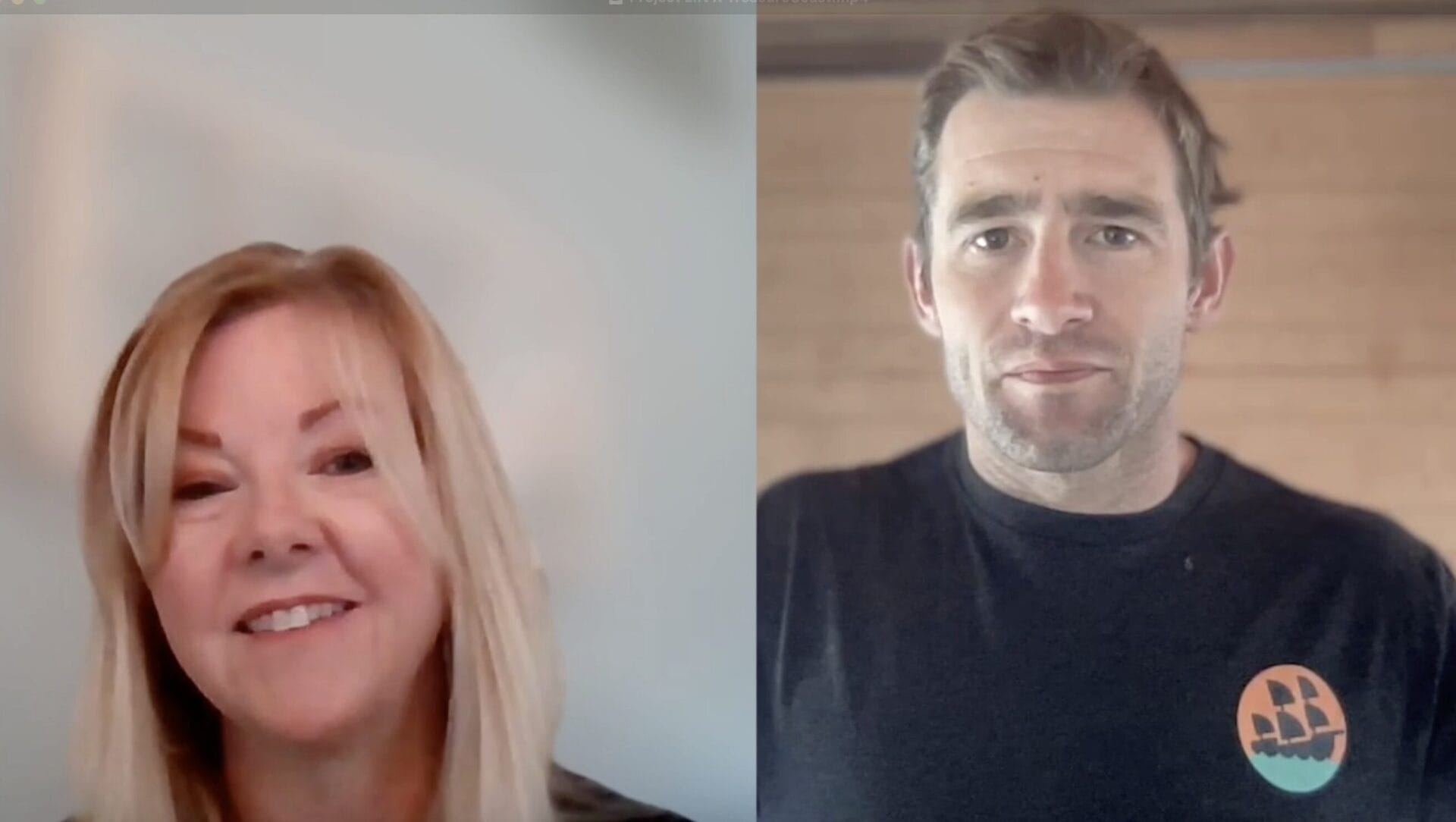Florida’s East Coast is well-known because of its stunning beaches, world-class fishing, and an invigorating boating culture. However, there is one crucial but often overlooked feature in Florida, and that’s its network of inlets. These narrow waterways connect the Atlantic Ocean to the Intracoastal Waterway (ICW) and act as crucial entry points for recreational boaters, anglers, and commercial vessels.
If you’re planning a fishing trip, want to try out some offshore diving, or want to cruise the ICW, you need to understand Florida East Coast inlets, as they promote safety, navigation, and efficiency. This essential guide breaks down the major inlets along Florida’s Atlantic coastline, especially some on the Treasure Coast, along with how to access them. It also explains some helpful tips for navigating inlets safely.
What is an Inlet?
An inlet is a narrow channel of water that connects the Atlantic Ocean to various inland waterways. This includes rivers, lagoons, and estuaries.
Along the beaches on Florida’s East Coast, these inlets allow boaters to move between the open ocean and the calm ICW. They work to reduce local currents, tides, and fishing conditions, and typically determine whether a passage will be safe and smooth.
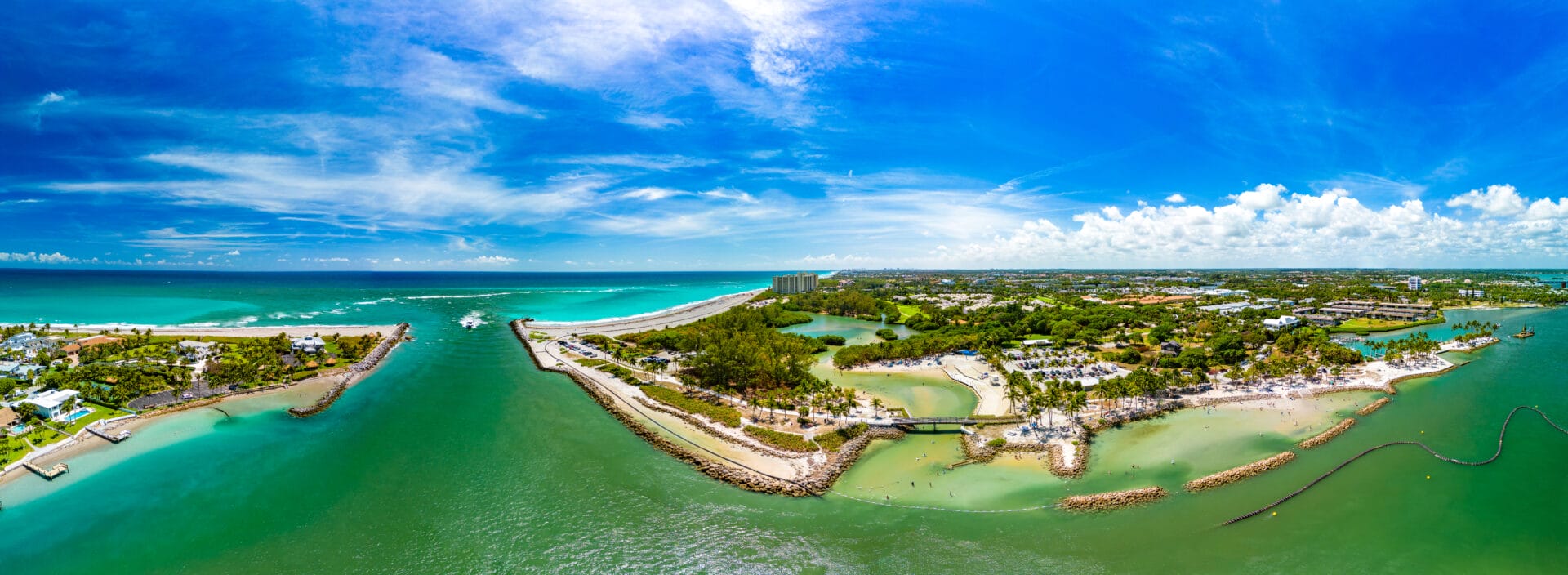
Jupiter Inlet and Dubois Park
Key East Coast Inlets and Their Features
Although inlets may look scenic, they harbor hidden dangers and hide powerful currents, shifting sandbars, and unpredictable wave patterns. Below is a list of some of the most notorious inlets along Florida’s Atlantic coast, each with unique risks and distinguishing features.
Fort Pierce Inlet
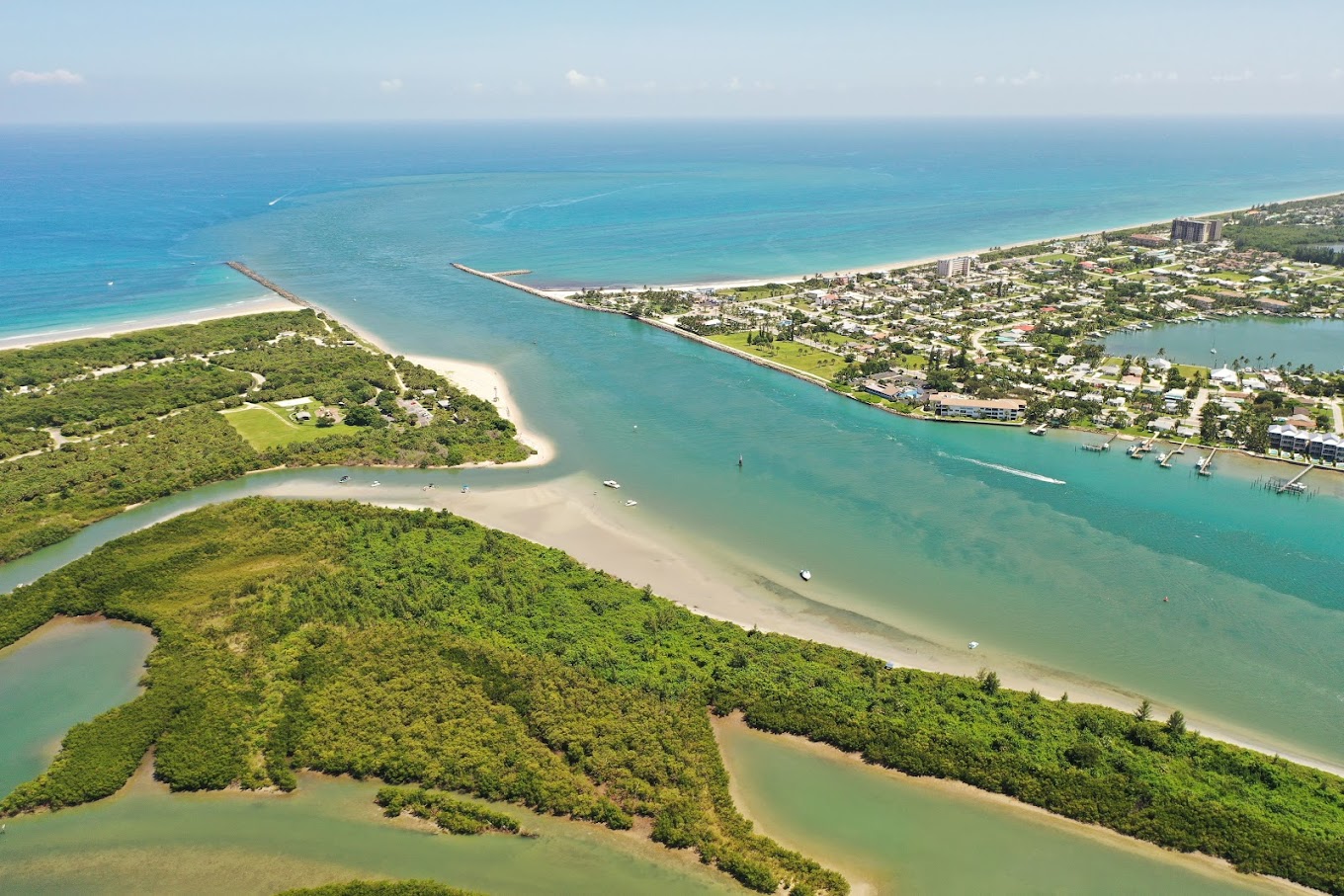
Fort Pierce Inlet State Park and Fort Pierce Inlet.
A bit farther north, the Fort Pierce Inlet has played a central role in the area’s maritime history since opening in 1921. It links the Indian River Lagoon to the ocean and supports commercial fishing fleets, recreational boaters, and waterfront tourism.
The Fort Pierce City Marina, located near this inlet, recently underwent major improvements. These include expanded docks, better access for dinghies, and a redesigned channel deep enough for larger vessels.
A manmade island system now shields the marina while filtering water to improve quality. This infrastructure helps protect the surrounding ecosystem while supporting the city’s working waterfront.
St. Lucie Inlet
Florida East Coast inlets like the St. Lucie Inlet are essential to the region’s marine infrastructure. Located in Martin County, the St. Lucie Inlet connects the Atlantic Ocean to the St. Lucie River and Indian River Lagoon, creating a critical route for boaters and anglers.
This inlet directly impacts water flow, salinity, and sediment movement throughout the estuary system. Due to shifting sands and narrow conditions, it requires frequent dredging to remain navigable. Strong currents and tides make navigation tricky, especially during storms or strong wind events. Despite the challenges, it remains a popular and safe route for offshore fishing access and intercoastal travel.
Jupiter Inlet
The Jupiter Inlet in northern Palm Beach County stands out for its connection to multiple waterways, including the Loxahatchee River and Intracoastal Waterway.
Originally created in the 1800s, the inlet has been widened and stabilized over time to accommodate growing marine traffic. Tides move quickly through this narrow passage, and boaters often encounter strong currents.
The inlet’s proximity to the Atlantic makes it a prime spot for both offshore fishing and scenic cruising. The nearby Coast Guard station highlights the inlet’s importance for safety and navigation.
Sebastian Inlet
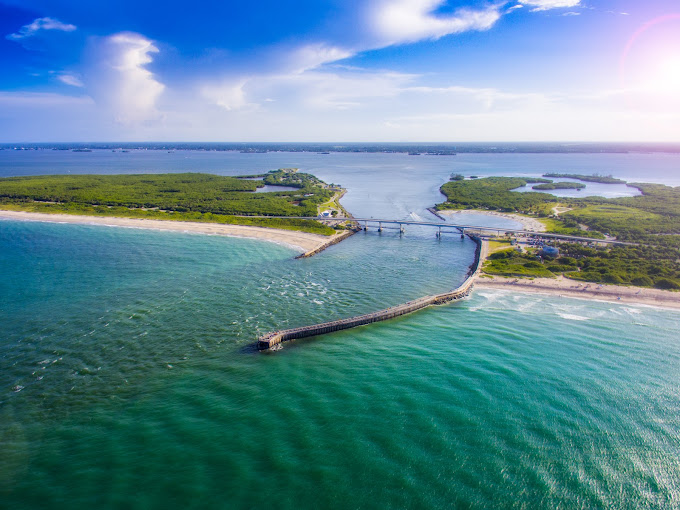
Beautiful blue waters along the ocean at the Sebastian Inlet.
Sebastian Inlet, sitting at the boundary of Brevard and Indian River counties, offers a different dynamic. It connects the northern Indian River Lagoon to the Atlantic and is part of a larger protected area within Sebastian Inlet State Park.
Known for powerful tides and active surf conditions, the inlet is popular with both anglers and surfers. Shoreline maintenance and dredging efforts are ongoing, helping keep the passage safe and the surrounding beach stable.
The area supports a wide range of marine life and offers vital water exchange between the ocean and estuary. As one of the busiest inlets on Florida’s east coast, Sebastian balances recreation, conservation, and navigation in a uniquely active setting.
St. Mary’s River
St. Mary’s River forms part of the Georgia-Florida border and features fast currents. To support a nuclear submarine base at Kings Bay, GA, the U.S. Navy extensively dredged it.
The entrance to St. Mary’s River is well-marked and deep, but boaters must stay clear of submarines that are entering or exiting. In general, it’s a relatively easy passage to navigate.
St. Johns River
The St. Johns River channel is used for heavy commerce and military vessels. It’s deep and marked with long jetties that extend into the sea, but buoys and range lights help mariners stay on course.
The main hazard on St. Johns River is large cargo ships navigating the winding river, which is why boaters must give them plenty of space. There is a Coast Guard station near the river mouth that offers current conditions and advice.
Port Canaveral
Port Canaveral is a busy inlet known for hosting cruise ships, Navy vessels, and many fishermen. Since it’s close to Kennedy Space Center, boaters are occasionally restricted due to rocket launches. This deep inlet is well-marked, making it accessible for different types of vessels.
Lake Worth Inlet (Palm Beach Inlet)
Lake Worth Inlet is easy to navigate and is known for its short entrance and deep water. Pleasure boaters use this inlet for its extensive anchoring spots. It’s also a popular starting point for boaters planning trips to the Northern Bahamas.
Port Everglades
Port Everglades is broad, deep, and well-marked, as this inlet leads to Fort Lauderdale. Since this is the heart of luxury yacht territory, this inlet sees a mix of pleasure boats, large cruise ships, and cargo vessels. This makes situational awareness crucial for safety.
Government Cut
Government Cut is the last central inlet on Florida’s East Coast. It leads into Miami’s bustling port and features high traffic from cruise and cargo ships.
This means that boaters must give large vessels plenty of room. Although this inlet is iconic for pleasure boaters, many individuals choose to wait for daylight before entering, carefully assessing conditions to ensure safety.
West Coast Inlets (For Context)
Although this guide focuses on Florida’s East Coast inlets, it’s also helpful to understand some notable West Coast channels. This will help you see how they differ from the Here’s a list to get started.
Boca Grande Channel
The Boca Grande Channel is a former phosphate shipping port. Although it’s quieter now, it remains a vital inlet, as it provides access to Charlotte Harbor. Additionally, there are numerous marinas at Punta Gorda and Burnt Store.
Port Tampa Bay Entrance
Port Tampa Bay is the Florida West Coast’s largest port. It has several entry routes, including the Egmont Channel, which is broad, deep, and buoyed for big ships.
The Southwest Channel offers a quieter passage for pleasure craft, although it’s not as well-marked, which can be dangerous. There is also the Passage Key Inlet, which is deep but narrower and also less marked, causing safety concerns.
St. Andrew Bay Entrance
This artificial pass is for large ships located near Panama City. St. Andrew Bay is the only big Florida channel prone to south winds, which cause significant chop.
St. Joseph Bay Entrance
St. Joseph Bay differs from other inlets in that it features wide open water with no narrow constriction. This means it has less risk of dangerous currents. However, the seas are rougher than expected, with moderate to strong winds.
Pensacola Bay
Pensacola Bay is the home of naval aviation and training carriers. The entrance to the bay is heavily marked and equipped for Navy vessels. However, it’s still accessible to smaller boats when the seas are calm and boaters exercise caution.
Tips for Navigating Florida East Coast Inlets Safely
Florida’s inlets can be unpredictable, even when the weather is calm. This makes safety guidelines crucial, whether you’re a novice or an experienced boater. Here is a list of tips you need to follow for safety:
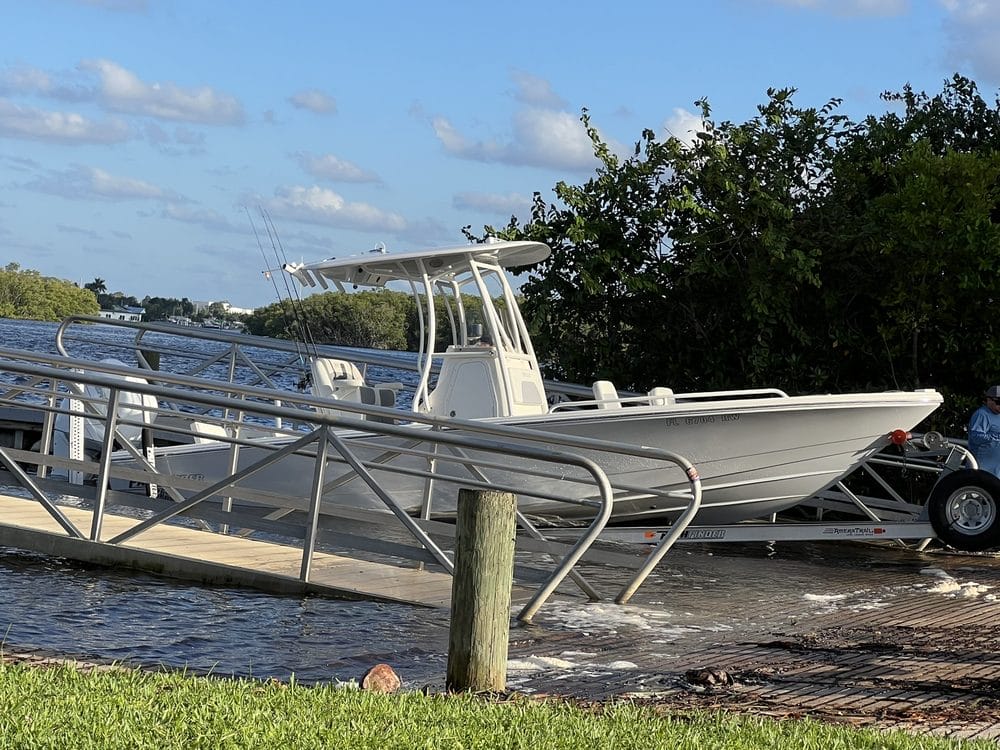
1. Time Your Crossing
Always avoid crossing during outgoing tides combined with onshore winds, as this creates steep, standing waves. The brief period between tides, known as the slack tide, is typically the calmest and safest time to cross.
2. Check Conditions in Advance
You should always use NOAA marine forecasts to monitor wind, swell, and tides. Some inlets, such as St. Lucie or Boynton inlets, may close during rough weather or, at the very least, issue warnings to promote safety.
3. Know Before You Go
It’s crucial always to carry updated nautical charts or GPS maps. Additionally, consult locals, dockmasters, or marina staff about any shoaling or temporary channel markers that can cause dangerous conditions.
4. Wear Life Jackets
This is non-negotiable. Always wear personal flotation devices (PFDs) when crossing inlets, even if conditions appear to be calm.
5. Avoid Inlets After Storms
Remember that hurricanes and nor’easters can drastically alter inlets after storms. Shoals shift, markers get damaged, and currents increase, making conditions dangerous. To stay safe, always avoid using inlets immediately after storms.

Planning for a Safe Passage Through an Inlet
Inlets can look calm one day and dangerous and rough the next. They’re unpredictable, and boaters are known for underestimating the risks of incidents. This leads to accidents when boats are damaged or sunk by shifting sandbars, or when unexpected waves may appear calm one day and become dangerously rough the next.
Boaters often underestimate the risks, leading to accidents where boats are damaged or even sunk by unexpected waves or shifting sandbars. These hazards underscore the importance of careful planning before entering an inlet, particularly an unfamiliar one.
Consider 2024, for example, when a sailboat sank in the Abacos. It encountered a strong ebb tide against a large ocean swell, despite the clear skies. The crew was rescued, fortunately.
Another example is Matt and Jessica Sailing, who represent another well-known boating incident. In 2012, they struggled through eight-foot breakers in St. Augustine due to how swiftly inlet conditions can become treacherous.
To safely navigate an inlet, you need to prepare in three key areas: selecting the right inlet, knowing accurate channel depths and locations, and timing your passage according to wind and currents.
1. Pick Your Inlet Wisely
Select inlets that suit your experience, boat size, and the current weather conditions. Always have a backup plan ready to go, complete with a nearby central inlet (Class A) in case conditions worsen.
2. Study Depths and Channels
Always stick to well-marked channels with reliable depth. Keep in mind that large shipping channels are dredged regularly, but smaller inlets can be unpredictable.
To stay safe, use up-to-date nautical charts and apps. This includes Aquamap, which utilizes USACE surveys to verify current conditions.
3. Plan for Wind and Currents
You should always avoid crossing when onshore winds oppose ebb tides. This creates dangerous waves and unsafe conditions.
Instead, aim to transit during slack or flood tides. You can slow your approach if needed to time it right.
Additional safety tips include:
- Wearing life jackets
- Securing loose items
- Using a “bar crossing checklist.”
- Consulting local marinas or TowBoat services for advice
If you’re ever unsure about conditions or channel markers, your safest bet is to choose a better-known inlet or wait. When boaters thoroughly prepare, they can work to avoid surprises and navigate inlets safely.
Steering Clear of Danger: How to Choose the Right Inlet
Florida’s East Coast, especially the Treasure Coast, has plenty of inlets, each offering gateway access to world-class boating, fishing, and adventure. The potentially dangerous catch of Florida East Coast inlets is that each inlet comes with its own unique set of hazards and challenges.
Whether you’re launching a small skiff or cruising the waters on a large yacht, local knowledge, caution, and timing are non-negotiables. They’re the key to a safe and enjoyable trip for everyone.
When choosing an inlet, always select one that is suitable for your destination, vessel size, and skill level. If you’re ever in doubt, don’t hesitate to ask local captains or marina staff for advice. They know these waters best and can work to keep you safe.
